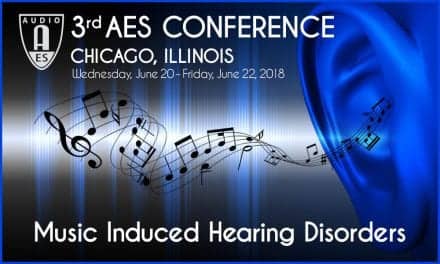Featured image: Figure 1a. Spectrum of the flute with relatively low-amplitude, high-frequency harmonics
Does a music program have a different frequency response than a speech program?
By Marshall Chasin, AuD
The long-term average speech spectrum (LTASS) has served as the basis for a number of hearing aid prescriptive formulae such as National Acoustic Labs (NAL-NL2) and the desired sensation level (DSL) approaches. However, there is no long-term average music spectrum (LTAMS). But maybe there should be.
While many musical instruments are similar to the speech spectrum—more low-frequency energy and less higher frequency energy—some, such as percussion instruments, can be quite different. Also, whereas speech is low-frequency harmonic energy (vowels, nasals, liquids) and high-frequency broad band sibilant energy (e.g., [s, l]), music possesses important and significant low-frequency harmonic energy AND high-frequency harmonic energy. And to complicate things, the exact amplitude of the higher frequency harmonics defines the musical instrument.

Figure 1b. Spectrum of the violin with relatively high-amplitude, high-frequency harmonics
Different Instruments, Different Spectra
Figure 1 shows two spectra: 1a. one of the flute and 1b. one of the violin. Despite having identical frequency harmonics for any given musical note, the differences are in the amplitude of the higher frequency harmonics—something we do not typically see with speech. In short, while the spectra energy of music and speech can be quite similar, there are significant frequency and amplitude differences.
This is exacerbated by the fact that even within music, there are significant differences between the long-term average music spectrum for different types. Moore(1) compared and contrasted classical music and jazz music and found that “on average,” classical music had significantly more mid-and high-frequency harmonic energy than jazz. Couple that with the fact that classical music is made up of simultaneous sources playing together, jazz having fewer, and speech, in most circumstances, only one.
Hearing Aid Frequency Response Shape and Sound Level
So, how does the hearing aid frequency response differ between a “music” program and a “speech” program? Part of the answer lies in the overall sound level of music as compared with that of normal conversational speech, and part of this lies in Part 2 regarding the changes in the shape of the frequency response.
Figure 2 shows prescribed gain at 1000 Hz for a range of sensorineural hearing losses up to a moderate (60 dB HL) level for a range of input levels, for input levels of not only 65 dB SPL and 80 dB SPL (which are commonly found with medium and loud speech), but also 95 dB SPL, which is a more realistic level associated with many forms of music.

Figure 2. Prescribed gain for a number of hearing losses (at 1000 Hz) with typical speech inputs of 65 dB SPL and 80 dB SPL, and a typical music input of 95 dB SPL. Based on FIG-6 from Killion and Fikret-Pasa,(2) and used with permission from The Hearing Review.(3)
Of interest is that even up to the moderate sensorineural level at 1000 Hz, while significant gain may be prescribed for speech, only 1-2 dB may be prescribed with the inherently higher levels associated with music.
Discussion of how the frequency response characteristics for music may differ from that of speech may be a moot point for a “music” program. Differences on the order of several decibels or less will probably not be clinically significant. At the higher levels associated with music, the frequency response should be similar to that specified for the “speech in quiet” program with 0 dB, or near 0 dB differences.
Further reading: Hearing SoundTracks, Musical Roads, and Pathways
Receiver for a Warmer Sound for Music
Clinically we have been finding that if a musician is fit with an “over-powered” receiver which they would use for live music (while reducing the gain and output differences to that which would be generated with a standard sized receiver), the music sounds “warmer” and is generally better accepted. Physically larger receivers have a slightly lower set of resonant frequencies because of the Helmholtz-related larger air volume in front of the receiver diaphragm. (Although never tried clinically, according to an analysis of Helmholtz resonances, the same result should be obtained with a small insert into the receiver bore, thereby decreasing its cross-sectional area).
To date, only 20 hard-of-hearing musicians have been fit with this “larger-than-needed receiver” approach whereby the musician is given two sets of hearing aid receivers and taught to use them with the appropriate program. Informally, 15 of the 20 have noticed a preference while listening to or playing music, and most note that the sound is “warmer.”
It is not clear why having slightly lower frequency resonances sounds more pleasant and “warmer” for music, and also why a few (5/20) didn’t notice much of a difference. However, none of the assessed musicians thought it was worse. Part of this may be related to increased gain and output in the 1500 Hz region. Increase in 1500 Hz can be obtained when musicians cup their hand around a micro- phone while singing live. The AFGA 467 was the tape of choice in the 1960s and 1970s by groups like the Rolling Stones, and the tape had a small resonance in the 1500 Hz region. Clearly more research is needed, but regardless, it does work.
References:
- Moore BCJ. 2012. Effects of bandwidth, compression speed, and gain at high frequencies on preferences for amplified music. Trends in Amplification, 16(3), 159–172.
- Killion MC and Fikret-Pasa S. 1993. The 3 types of sensorineural hearing loss: Loudness and intelligibility considerations. The Hearing Journal. 46(11), 31-34.
- Chasin M. (2012). Okay, I’ll say it: Maybe people should just remove their hearing aids when listening to music! Hearing Review, 19(3), 74.
About the author: Marshall Chasin, AuD, is an audiologist and the director of auditory research at the Musicians’ Clinics of Canada, adjunct professor at the University of Toronto, and adjunct associate professor at Western University. You can contact him at [email protected].






Informed discussion of music and hearing aids is welcome and, can I suggest, overdue?
Big thanks to Marshall Chasin and just one or two others who have really persisted with the detail.
BBC-trained in sound recording, speech and music, my hearing aid experience has been challenging. It began with thin, painfully loud analogue back in the eighties, progressed to comfortable but still unmusical digital in the 90s… until wonder of wonders, a new audiologist said she could activate a Music option. Well, who knew?
Result: much better, less compressed, though still barely any low-end. But at the time, pure tone assessment was only taken down to 250Hz.
Happy ending: a further national health audiologist, taking on board my love of live classical music, as well as my voice-recording work, invited me to take my little keyboard into clinic. Impressive, because she said she had zero training in fitting for music.
Happy ending. I played, she equalised. Low end fundamentals now audible down to 40 and bit below. (Behind-ear, small vents). Blur, flutter and clogging in upper harmonics remedied. Over-fast multi-band compression removed in favour of simple wideband.
Music, live or hif-fi speaker, is much better – and so is speech because it actually sounds human not telephonic!
My hearing is a typical old-guy’s ski slope, starting around 2k, expiring at 4k, alas. But what I do hear is great.